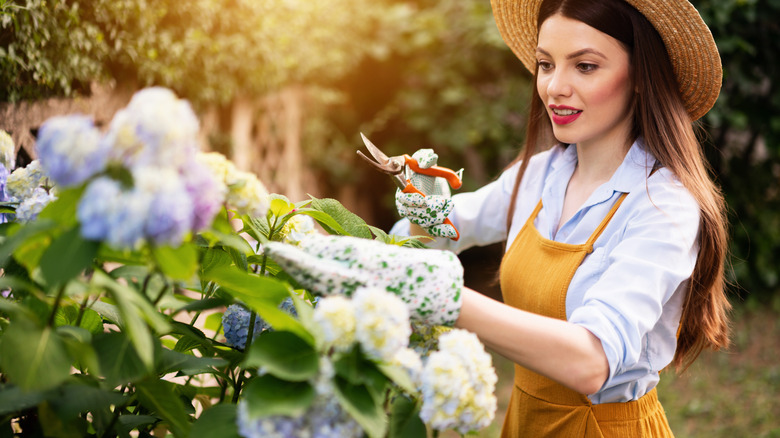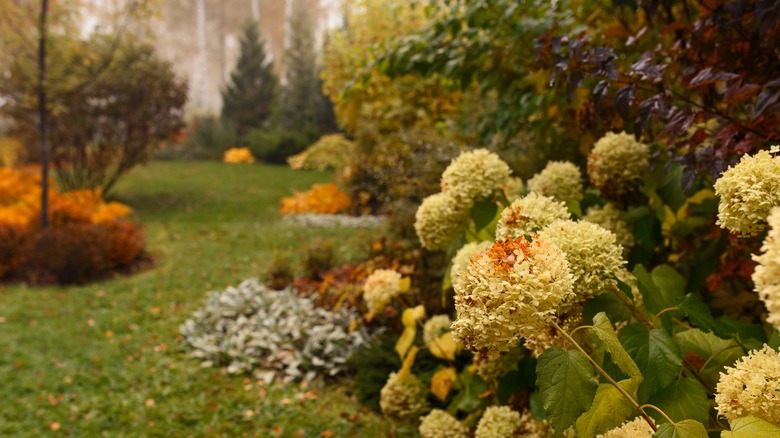Introducing hydrangeas into your garden can be a game-changer, especially if you’re dealing with the nuisance of feral goats. These animals, known for their voracious appetites, can rapidly degrade a lush garden into a desolate landscape. They do more than nibble on plants; they often uproot them, inflicting extensive damage. You might notice the aftermath of a goat’s visit: bare patches where flowers once thrived and young shoots gnawed to the ground. This damage is unsightly and disrupts your garden’s ecological harmony. Goats, surprisingly, find hydrangeas unappealing. The sweet scent and texture of these flowers, which humans enjoy, are deterrents for goats. This makes hydrangeas a natural and non-invasive option to safeguard your garden.
Hydrangeas belong to a diverse family of flowering plants, offering around 75 species – all of which goats dislike. From the delicate lacecap flowers of some bigleaf varieties to the bold blooms of panicle hydrangeas, they provide a wide range of aesthetic appeal. Their ability to adapt to different soil pH levels further enhances their charm and makes it easy to take care of hydrangeas. In essence, planting hydrangeas in your garden serves multiple purposes: They add beauty and act as a natural deterrent.
How hydraneas can help deter goats

Strategically placing hydrangeas in your garden creates a natural barrier that discourages goats from encroaching on your plant beds. Furthermore, you can opt to grow taller hydrangea varieties, like the panicle, which can offer additional protection by shielding other plants in your garden. This protective quality is particularly valuable if your space hosts a variety of plant species, some of which may be more attractive to goats. While the natural aversion to hydrangeas works in your favor, goats may still venture into your garden out of curiosity or due to a lack of alternative food sources. This makes it essential to combine hydrangeas with other goat deterrent strategies, such as secure fencing.
When constructing a fence, ensure it is tall and sturdy enough to prevent goats from jumping over or pushing through. Goats are known for their agility and strength, so a fence that is at least 4 feet tall, with strong posts and mesh or wire netting, is recommended. Additionally, creating a buffer zone around your garden can be highly effective. This zone should comprise of plants that goats find unpalatable. Such plants could include lavender, sage, or peppermint, which are known for their strong scents or flavors that goats generally avoid. All in all, this approach to goat deterrence is about more than just exclusion; it’s about preserving the beauty and health of your garden in an aesthetically pleasing way, without relying on harsh, toxic chemicals.
Understanding this hardy, resilient plant

Hydrangeas, beyond their ability to repel goats, offer various other advantages, making them an excellent choice for diverse garden settings. These plants display remarkable hardiness and can thrive in various climates. For instance, some hydrangea varieties are cold-resistant, making them suitable for northern gardens that experience harsh winters. On the other end of the spectrum, there are hydrangea varieties that are specially adapted to withstand the heat and humidity typical of southern landscapes. These heat-tolerant types maintain their beauty and vigor even in high temperatures.
When it comes to soil and light preferences, hydrangeas are quite adaptable. While they generally favor well-drained, moist soil, they exhibit a notable tolerance for a range of soil types, including clay and sandy soils. In terms of sunlight, they can flourish in full sun, yet they are also quite comfortable in partial shade. This flexibility makes hydrangeas a versatile option for gardeners with different light and soil conditions.
While hydrangeas are effective in repelling goats, it’s essential to note their toxic nature. These plants contain cyanogenic glycosides, which are poisonous if consumed in large quantities. These toxic properties can also affect other animals, including household pets like dogs and cats. Therefore, it is crucial to ensure that hydrangeas are planted in inaccessible areas or that your furry friends are supervised when near these plants.




